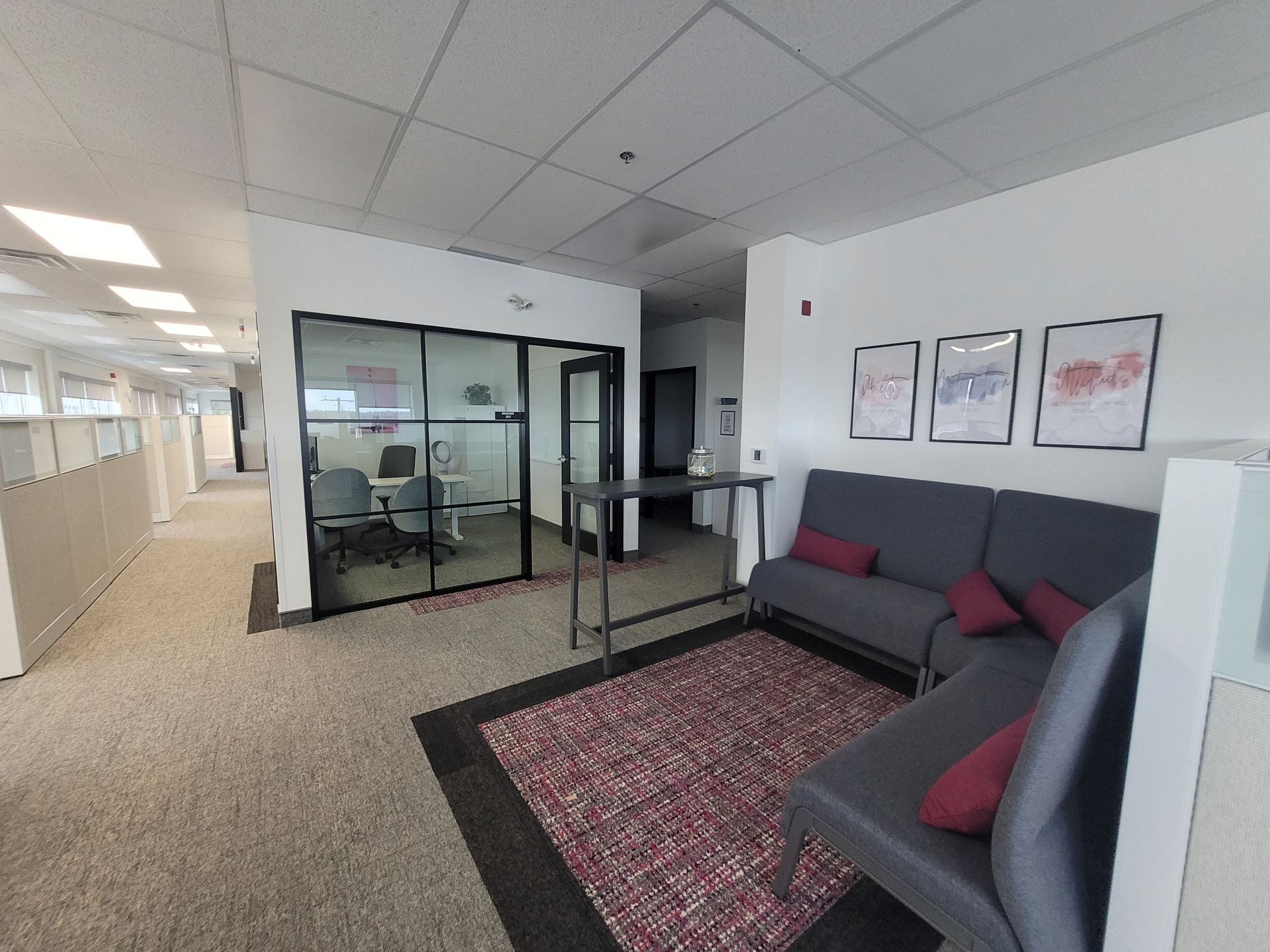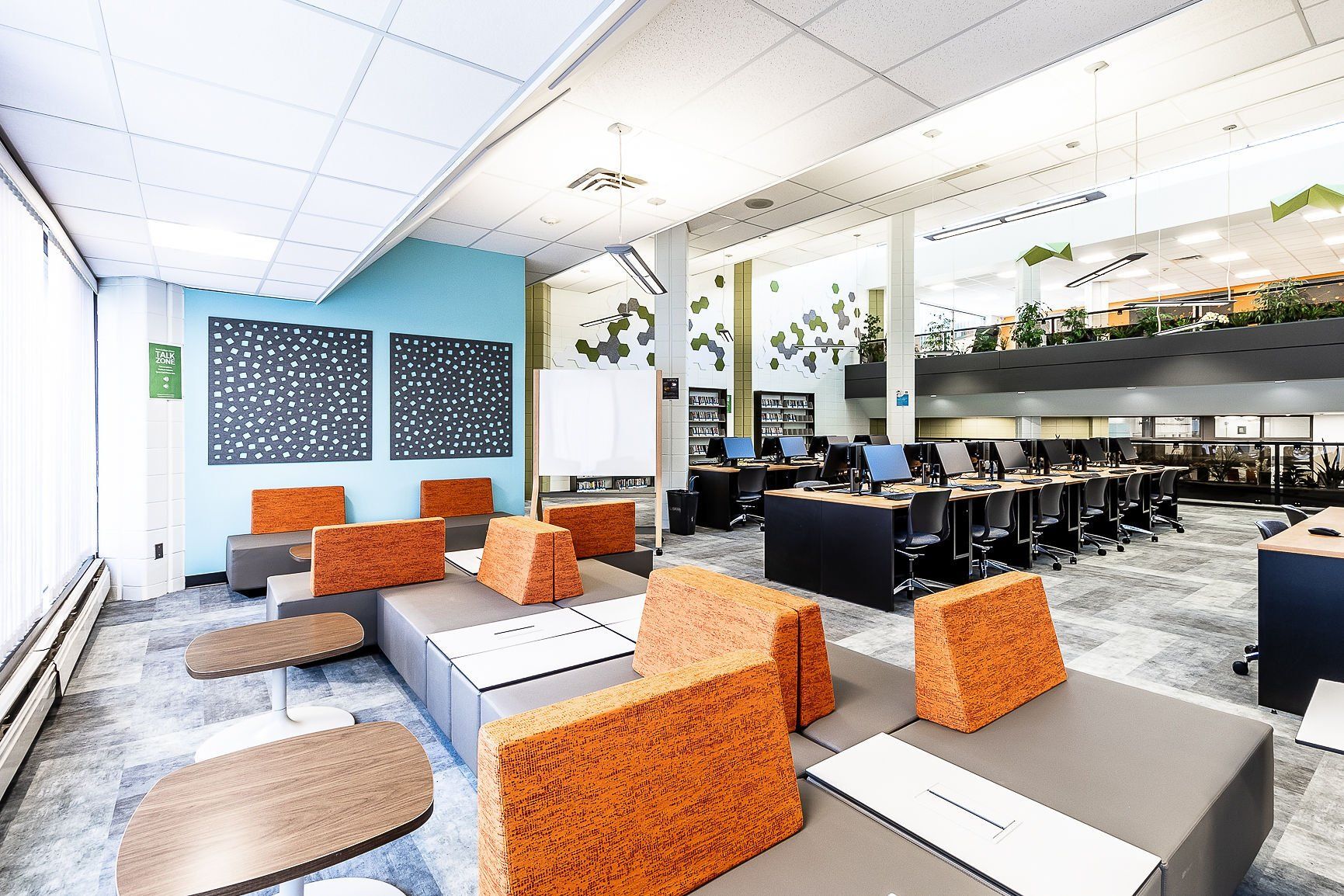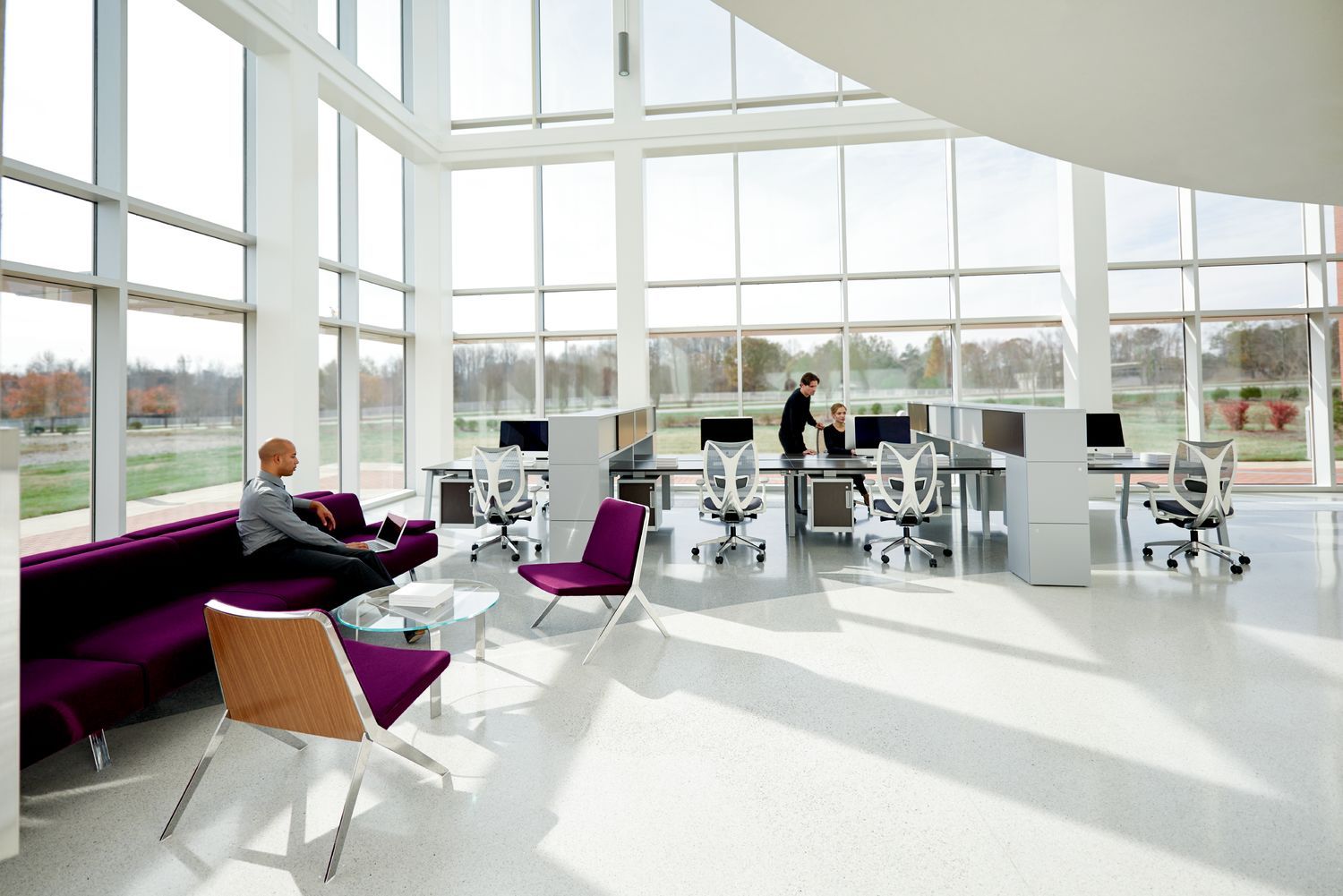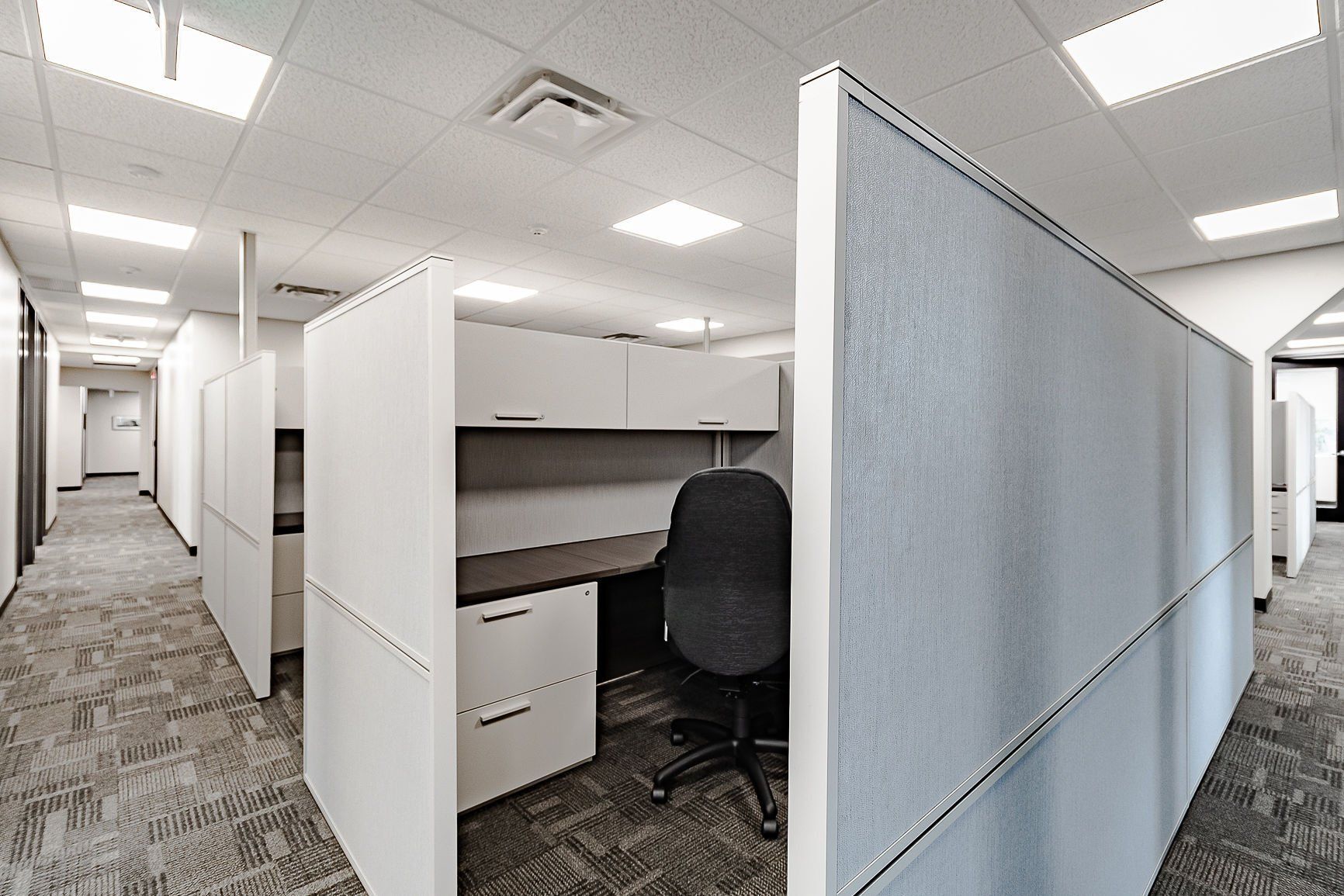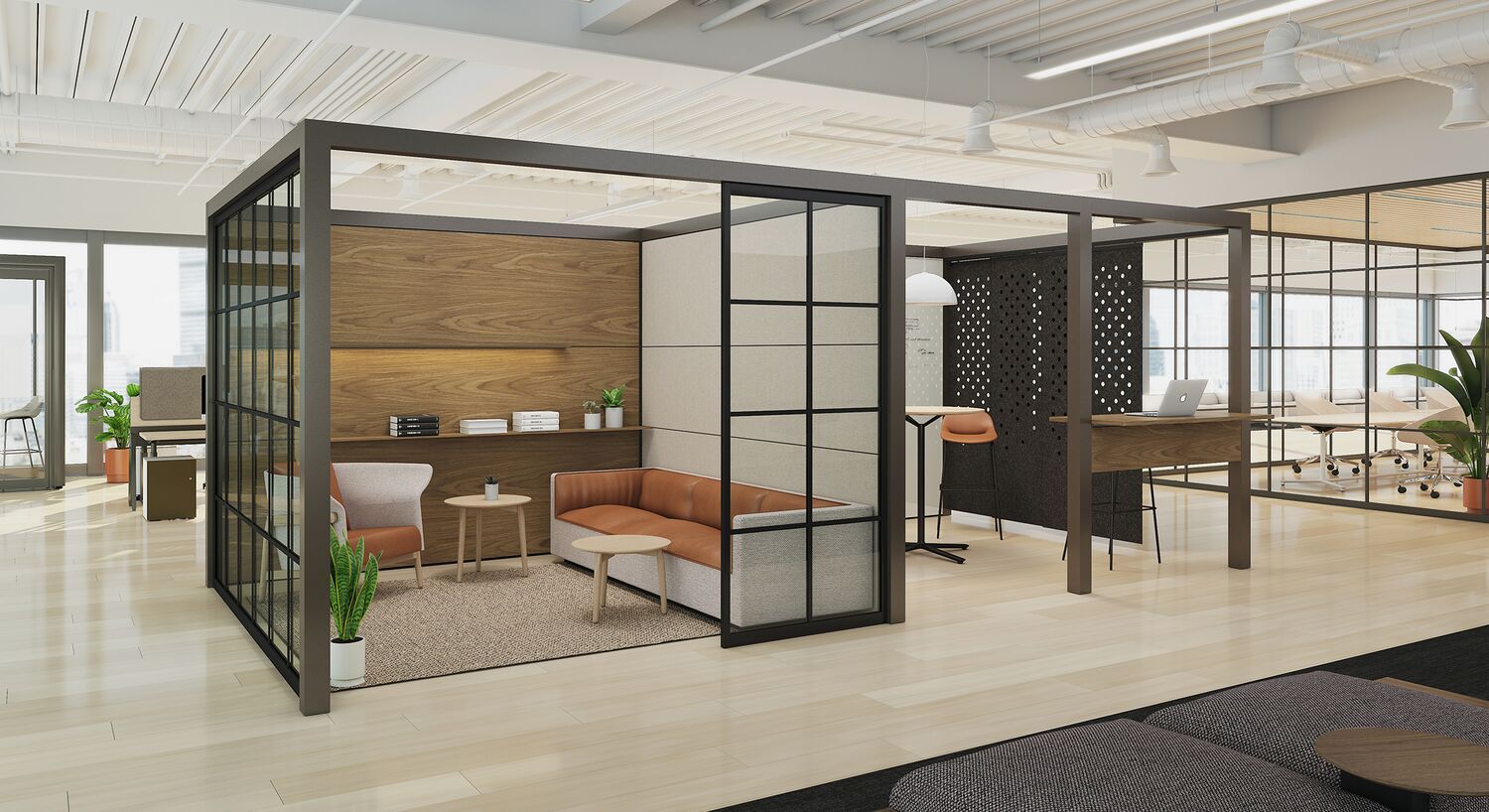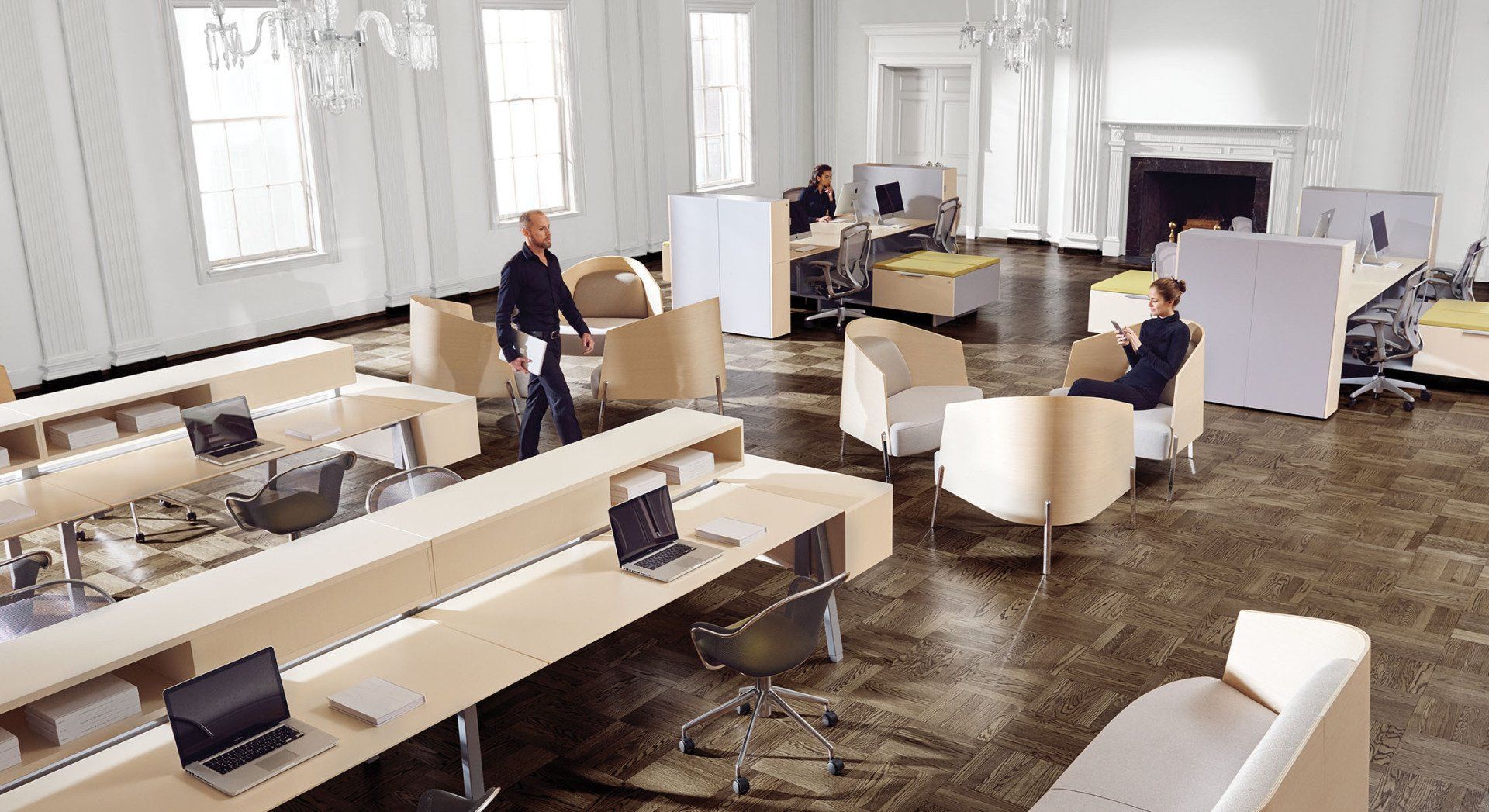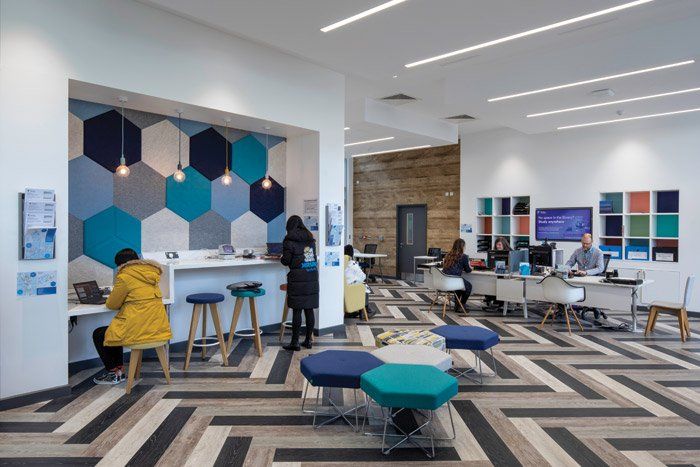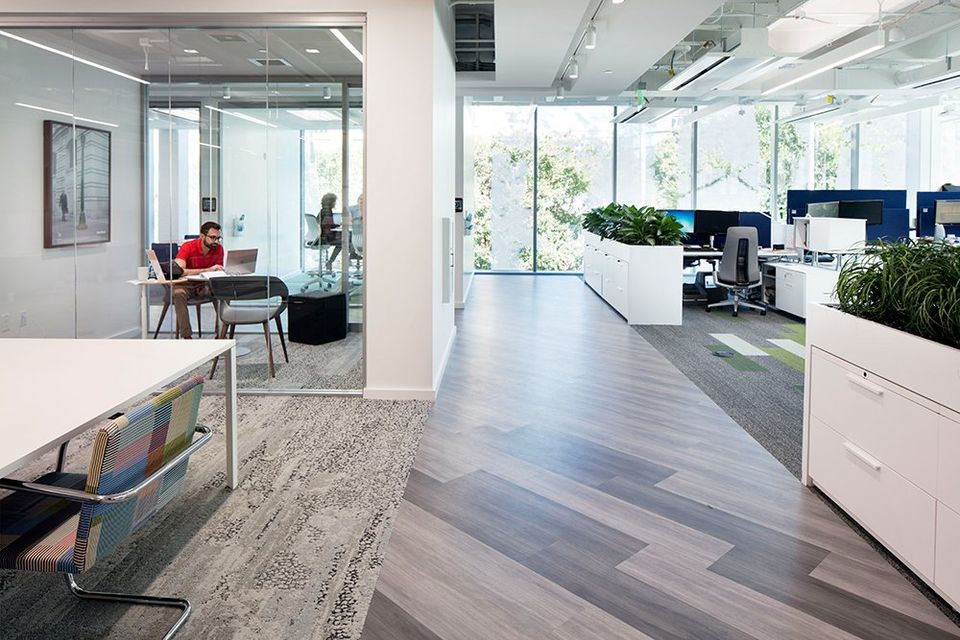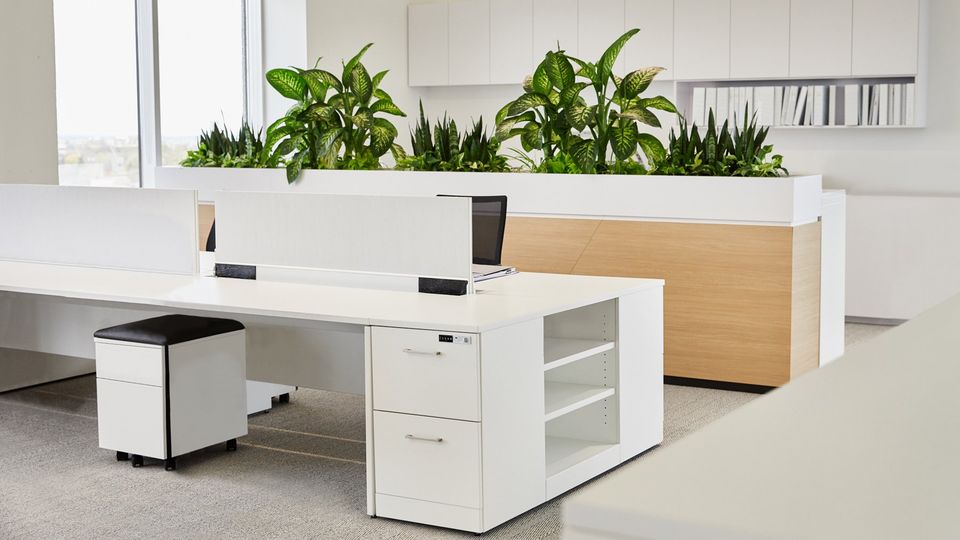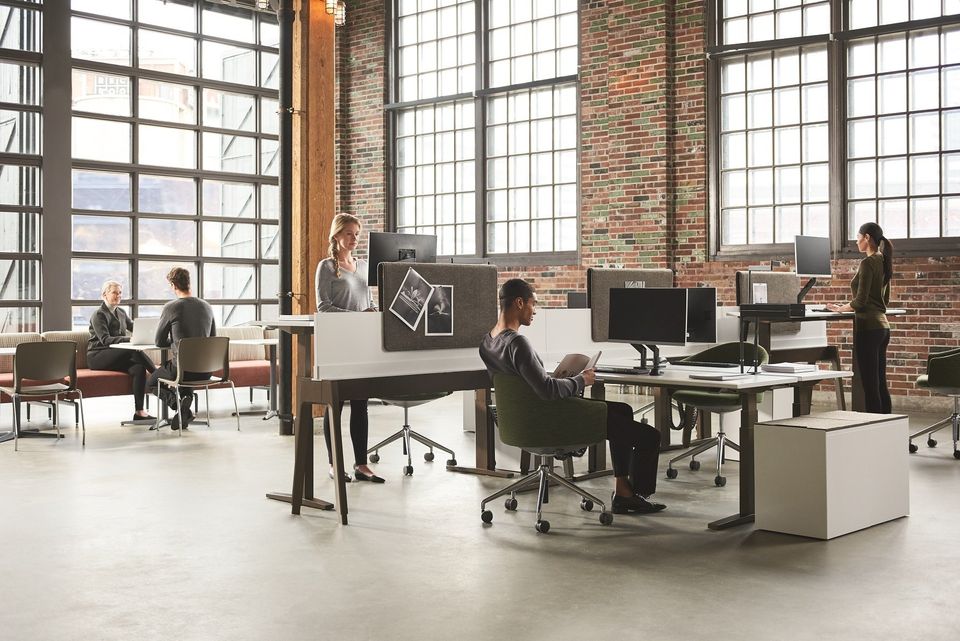Incorporating Biophilic Design in the Workplace
Biophilia (the love of nature) focuses on the human attraction to nature and natural processes.
Biophilic Design addresses this human love for nature and incorporates these concepts to improve the spaces we live and work in providing numerous benefits to our health. Incorporating direct or indirect elements of nature into the workplace has been noted to reduce stress, blood pressure and heart rates. There are many ways to incorporate Biophilic Design into the workplace.
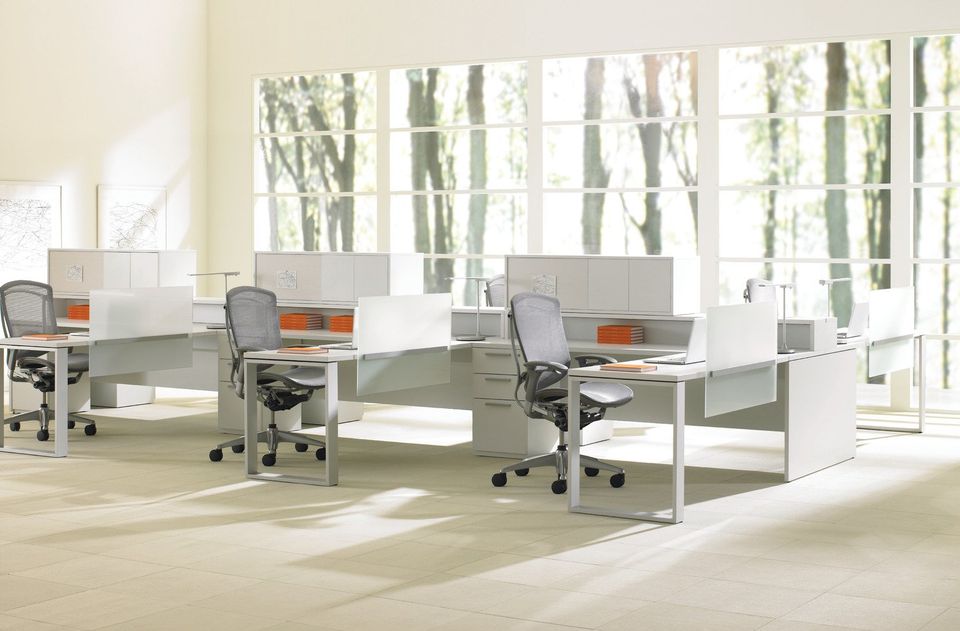
Photo: Artopex
Access to natural light and outdoor views
Photo: Landscape Forms
Utilize available outdoor areas
Access to outdoor spaces such as rooftops, balconies or courtyards can incorporate comfortable seating areas and tables so that staff can work outdoors when weather permits. Access to natural light and fresh air has numerous benefits including increased productivity, creativity and wellbeing.
Embrace Colour
Colour can have an impact on staff wellbeing. Dull colours can have a harmful affect while the addition of bright colours can have a positive affect on staff moods and wellbeing.
Photo: Interface
Incorporate natural features such as wood and stone
Natural materials can be very calming and soothing. Including natural features and textures in the workplace will help mimic the outdoors and assists with "bringing the outdoors in"
Photo: Artopex
Include plant life in the workplace
One of the simplest and most obvious solutions for biophilic design, including plant life in the workplace can increase oxygen levels and improve concentration levels while decreasing mental fatigue.
Photo: Teknion
Diverse spaces and choice of work settings
It is important to accommodate the staff need with space. If staff need to concentrate, provide them a quiet space to work. If staff need to collaborate, provide them a comfortable space to do so. Provide enough space for staff to work comfortably without feeling cramped or stuffy.
How do we implement Biophilic Design
- Optimization and organization of spaces with human focus
- Thermal comfort levels
- Air quality, toxin levels and ventilation
- Acoustic comfort
- Improved natural and artificial lighting
- Internal and external views onto nature
- The use of natural materials, textures, patterns and colours
- The incorporation of recuperative spaces
- Aesthetic environment with brand recognition
- Psychological and physiological effects of space
The adoption and increasing acceptance of biophillic office design is due to numerous studies which have proven that by introducing elements of nature into the workplace, staff productivity, creativity and morale have increased, as well as a decrease in the levels of mental fatigue.
Contact Us
